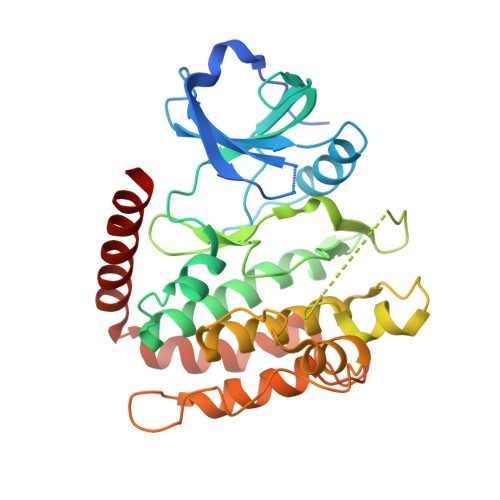Human RIPK3 maintains MLKL in an inactive conformation prior to cell death by necroptosis.
Meng, Y., Davies, K.A., Fitzgibbon, C., Young, S.N., Garnish, S.E., Horne, C.R., Luo, C., Garnier, J.M., Liang, L.Y., Cowan, A.D., Samson, A.L., Lessene, G., Sandow, J.J., Czabotar, P.E., Murphy, J.M.(2021) Nat Commun 12: 6783-6783
- PubMed: 34811356
- DOI: https://doi.org/10.1038/s41467-021-27032-x
- Primary Citation of Related Structures:
7MON, 7MX3 - PubMed Abstract:
The ancestral origins of the lytic cell death mode, necroptosis, lie in host defense. However, the dysregulation of necroptosis in inflammatory diseases has led to widespread interest in targeting the pathway therapeutically. This mode of cell death is executed by the terminal effector, the MLKL pseudokinase, which is licensed to kill following phosphorylation by its upstream regulator, RIPK3 kinase. The precise molecular details underlying MLKL activation are still emerging and, intriguingly, appear to mechanistically-diverge between species. Here, we report the structure of the human RIPK3 kinase domain alone and in complex with the MLKL pseudokinase. These structures reveal how human RIPK3 structurally differs from its mouse counterpart, and how human RIPK3 maintains MLKL in an inactive conformation prior to induction of necroptosis. Residues within the RIPK3:MLKL C-lobe interface are crucial to complex assembly and necroptotic signaling in human cells, thereby rationalizing the strict species specificity governing RIPK3 activation of MLKL.
Organizational Affiliation:
Walter and Eliza Hall Institute of Medical Research, 1G Royal Parade, Parkville, VIC, 3052, Australia.
















